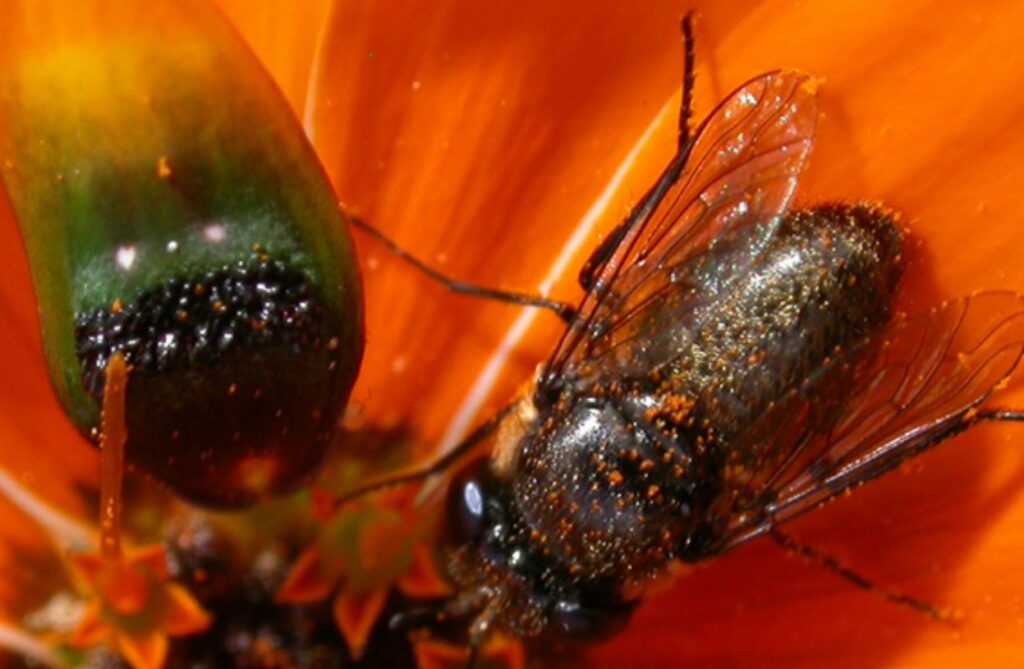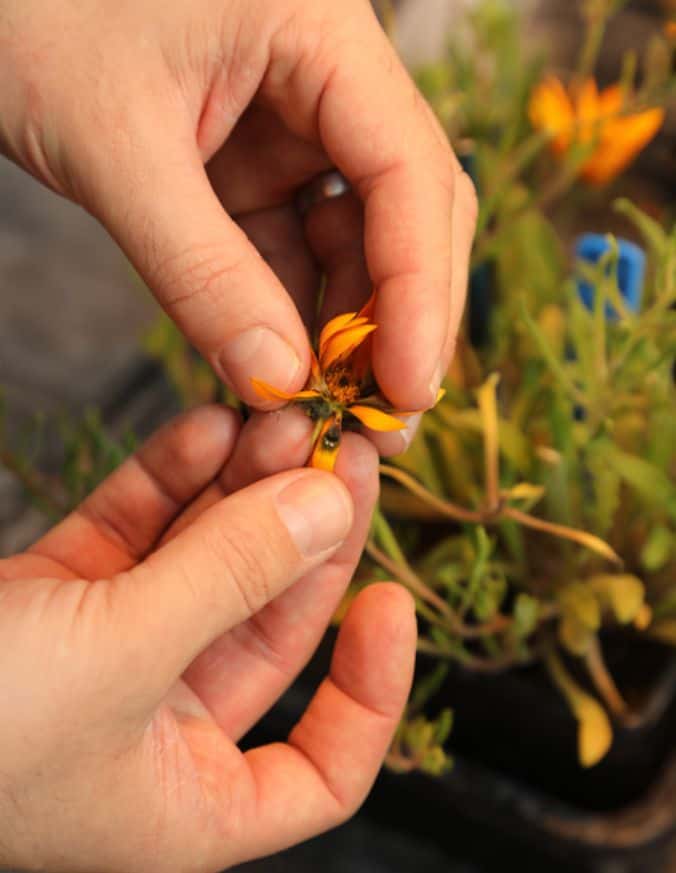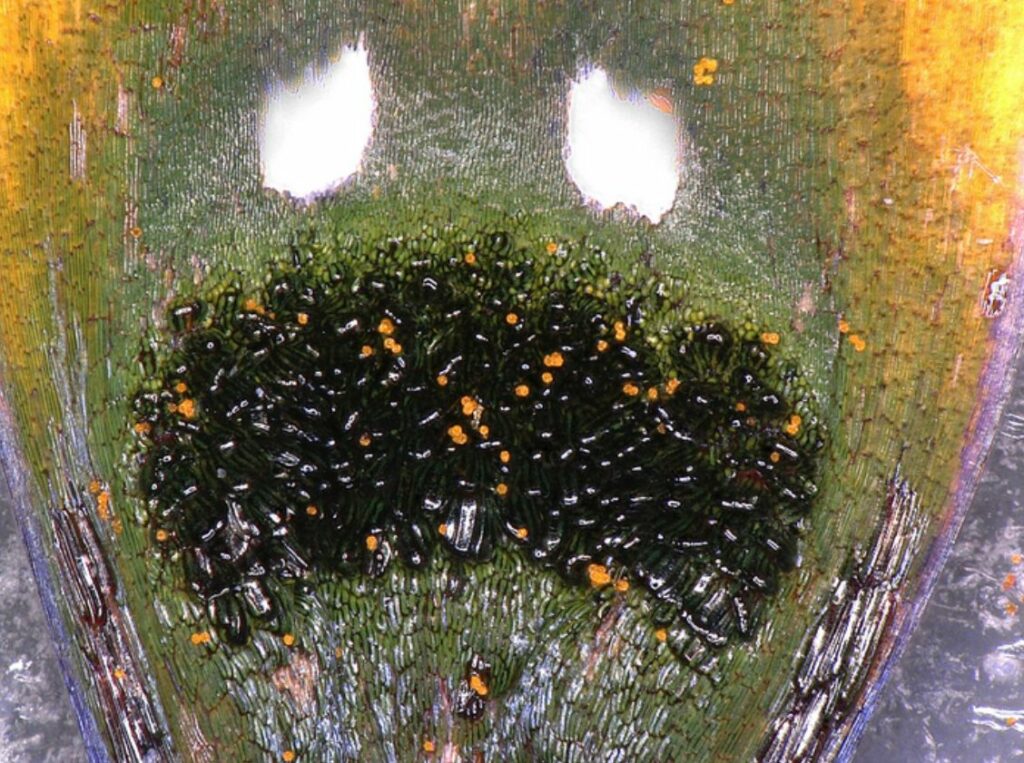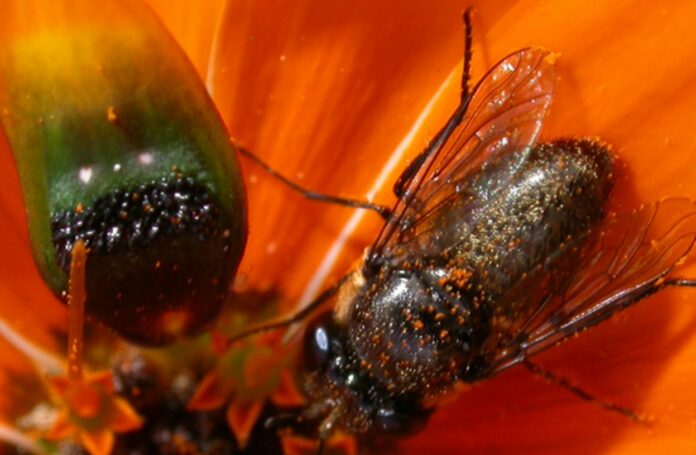Scientists have been fascinated for decades by the complex three-dimensional deception created by a South African daisy called Gorteria diffusa, which resembles a female fly on its petals, complete with hairy bumps and white highlights.
This deception tricks male flies into attempting to mate with the flower, resulting in unsuccessful attempts that ultimately lead to the flower successfully gathering pollen.
Researchers have now discovered three sets of genes that contribute to the development of the fake fly on the daisy’s petals. The biggest surprise is that all three sets already serve additional purposes for the plant: one transfers iron around, another promotes the growth of root hairs, and the third regulates the timing of flower production.
According to the research, the three gene sets have been combined in novel ways to create false lady flies in the daisy petals. The petal’s pigments, which are typically reddish-purple, get iron from the ‘iron moving’ genes, transforming the color to a more fly-like blue-green. The root hair genes cause the hairs to spread out to provide texture to the petal. The third set of genes causes the fake flies to appear in seemingly random positions on the petals.
“This daisy didn’t evolve a new ‘make a fly’ gene,” says senior author Professor Beverley Glover.

“Instead, it did something even cleverer – it brought together existing genes, which already do other things in different parts of the plant, to make a complicated spot on the petals that deceives male flies.”
The daisy’s petals, according to the researchers, provide it with an evolutionary advantage by luring more male flies to pollinate it. In South Africa, the plants flourish in a hard desert environment with just a short wet season to develop blooms, get pollination, and set seed before they perish. As a result, there is fierce rivalry to attract pollinators, and the South African daisy stands out from the throng thanks to its petals decorated with fake lady flies.
The findings were published in the journal Current Biology today.
The group of plants that includes the sexually deceptive daisy is relatively young in evolutionary history, having emerged only 1.5 to 2 million years ago when compared to most other living organisms. Interestingly, the earliest members of this plant family lacked the characteristic fake fly spots found on modern daisy petals, suggesting a rapid evolution of this trait.
“We’d expect that something as complex as a fake fly would take a long time to evolve, involving lots of genes and lots of mutations,” adds first author Dr. Roman Kellenberger.

“But actually by bringing together three existing sets of genes it has happened much more quickly.”
The researchers conducted a comparative study of gene expression in petals with and without fake flies in the same species of daisy plant, as well as in a different species of daisy with a simpler spot pattern. Their goal was to identify the specific genes responsible for producing the highly deceptive fake fly spots on the daisy petals.
This daisy is unique in its ability to produce multiple fake flies on its petals. While other members of the daisy family may have simpler spot patterns, such as a ring of spots around all the petals, these are not as convincing to real flies. By examining various daisies within the family tree, the researchers were able to establish the order in which the fake flies evolved: first the color, then the random positioning, and finally the texture.

“It’s almost like evolving a whole new organ in a very short time-frame. Male flies don’t stay long on flowers with simple spots, but they’re so convinced by these fake flies that they spend extra time trying to mate, and rub off more pollen onto the flower – helping to pollinate it,” adds Kellenberger.
Source: 10.1016/j.cub.2023.03.003
Image Credit: University of Cambridge
